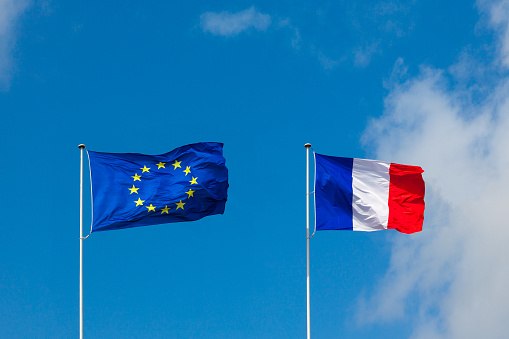Following the European Parliament’s recent adoption of the crypto-focused Markets in Crypto Assets Legislation also known as ‘MiCA’, other countries including Ukraine have been seen following the European Union (EU) steps and embracing MiCA.
Notably, France is now the latest country that has also joined in on the increasing MiCA adoption. On Friday, French Regulator, L’Autorité des marchés financiers (AMF) announced it’s pondering a “Fast Track” route to the MiCA compliance for registered companies in the region.
AMF To ‘Fast Track’ MiCA For Registered Firms
On April 21, the French Financial Markets Authority (AMF) released a statement expressing its satisfaction with the European Parliament’s recent adoption of the Markets in Crypto Assets (MiCA) regulation, a groundbreaking crypto regulation in Europe.
According to the French regulator, MiCA will improve the rivalry between French and European businesses. The AMF noted:
This regulation will help to increase the competitiveness of French and European players, by creating a harmonized framework in Europe, and to ensure better protection for investors.
France has an existing regulatory framework for cryptocurrencies, classifying companies into two distinct tiers. All companies must undergo a “simple” registration process, while an optional higher level of authorization necessitates additional disclosure. However, companies will have obligations under the MiCA legislation comparable to those of the more rigorous authorization level.
Related Reading: Why The European Union Voted Against A De Facto Bitcoin Mining Ban
The AMF has announced that it will explore the possibility of a “fast-track” option for registered companies as it transitions from its existing domestic regulation to the newly adopted European-wide rules.
The AMF has stated that it will ensure its existing regulations are updated to facilitate the transition to MiCA. It will also be collaborating with the European Banking Authority (EBA) and the European Securities and Markets Authority (ESMA) in the next phases of the regulation’s development.
The EBA and ESMA will be drafting texts to provide guidance on how different aspects of MiCA should be implemented.
Summary On The MiCA Legislation
The European MiCA regulation is a set of proposed regulations that aim to create a harmonized framework for the regulation of cryptocurrencies and other digital assets within the European Union (EU). The regulation covers various aspects of the crypto industry, including custody, issuance, and trading of digital assets.
Some of the key provisions of the proposed MiCA regulation include mandatory authorization for all crypto asset service providers, rules around custody of crypto assets, disclosure requirements for whitepapers, and enhanced investor protection measures.
Related Reading: European Lawmakers Impose €1000 Limit On Unverified Crypto Users
The MiCA regulation is expected to provide greater clarity and legal certainty for businesses operating in the crypto industry, as well as improve consumer protection by setting minimum standards for digital assets.
The proposed regulation is currently going through the legislative process in the EU, with the European Parliament and member states working to finalize the text. Approval of the regulation means it will become law across all EU member states.
Though specific provisions related to MiCA on crypto assets providers are set to be implemented in January 2025, according to Chainalysis. However, countries are already adopting the regulation.
On Saturday, Bitcoinist reported Ukraine has announced plans to adopt the MiCA regulations barely a day after approval by the European Union Parliament. Meanwhile, the global crypto market has shown a bit of exposure to the different news circulating in the industry.
Over the past 24 hours, the global crypto market capitalization has declined by nearly 1%, at the time of writing with a value below $1.3 trillion.
Featured image from Unsplash, Chart from TradingView
